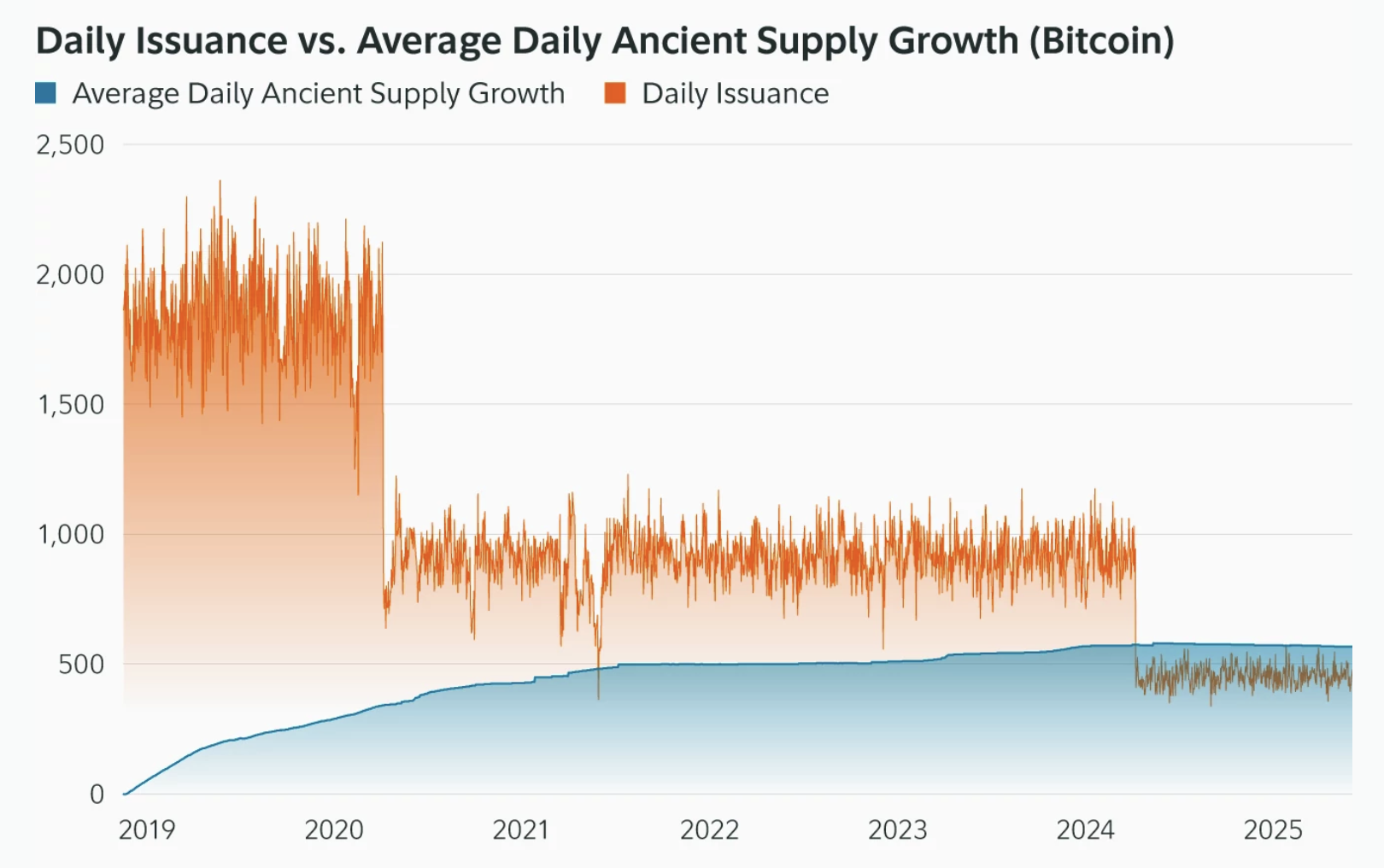Nearly 30% of All Bitcoins Could Be Ancient by 2035 – Why Does it Matter?
0
0

According to a new report from Fidelity, 17% of all BTC officially counts as “ancient Bitcoin,” meaning it has not moved in at least ten years. These assets are worth around $360 billion.
Worryingly, Fidelity claims that more BTC is becoming ancient per day than new miners can replace it. Between this trend and corporate acquisitions, Bitcoin’s function as a circulating currency may be in danger.
Is Ancient Bitcoin Taking Over
Thanks to the trend of HODLing, Bitcoin has no shortage of whales that hold onto their assets for years at a time.
However, the crypto industry is more than 15 years old now, and the number of “ancient” tokens can only be growing. Fidelity conducted a study on ancient Bitcoin, determining a series of important conclusions:
Fidelity is a leading Bitcoin ETF issuer, so it naturally has a strong interest in conducting this research. On the surface, the claim that 17% of all Bitcoins are ancient seems extremely noteworthy.
The firm estimates that 3.4 million BTC fall into this category, representing more than $360 billion in value. However, Fidelity’s findings on mining might be even more consequential:
 Ancient Bitcoin vs Mined. Source: Fidelity
Ancient Bitcoin vs Mined. Source: Fidelity
Specifically, the firm claimed that more Bitcoin is becoming ancient per day than new tokens are being mined. The mining industry is becoming less profitable, and ETF issuers purchase far more BTC than miners can produce.
Fidelity found that 566 tokens become ancient per day, while only 450 new ones replace them.
Why Ancient ‘Lost’ Supply is a Major Concern
A significant concern is that a portion of the ancient supply is effectively lost, for reasons such as discarded private keys or inaccessible wallets. On-chain data suggests that around 20% of all mined Bitcoin has already been lost permanently.
Separately, over 1.8 million Bitcoins linked to Satoshi Nakamoto have remained dormant for more than ten years. When coins are truly lost, the effective circulating supply shrinks, which alters supply-demand dynamics.
Reduced active supply can amplify price volatility. As Bitcoin’s supply cap approaches, each incremental removal from active circulation causes a tighter available float.
Also, concentration risk rises when fewer coins remain active. Whales can move the market more easily if active supply dwindles.
0
0
 Manage all your crypto, NFT and DeFi from one place
Manage all your crypto, NFT and DeFi from one placeSecurely connect the portfolio you’re using to start.





